Strymon BigSky vs Strymon BlueSky: which reverb is best for your 'board?
We put two of Strymon’s top-tier pedals head to head
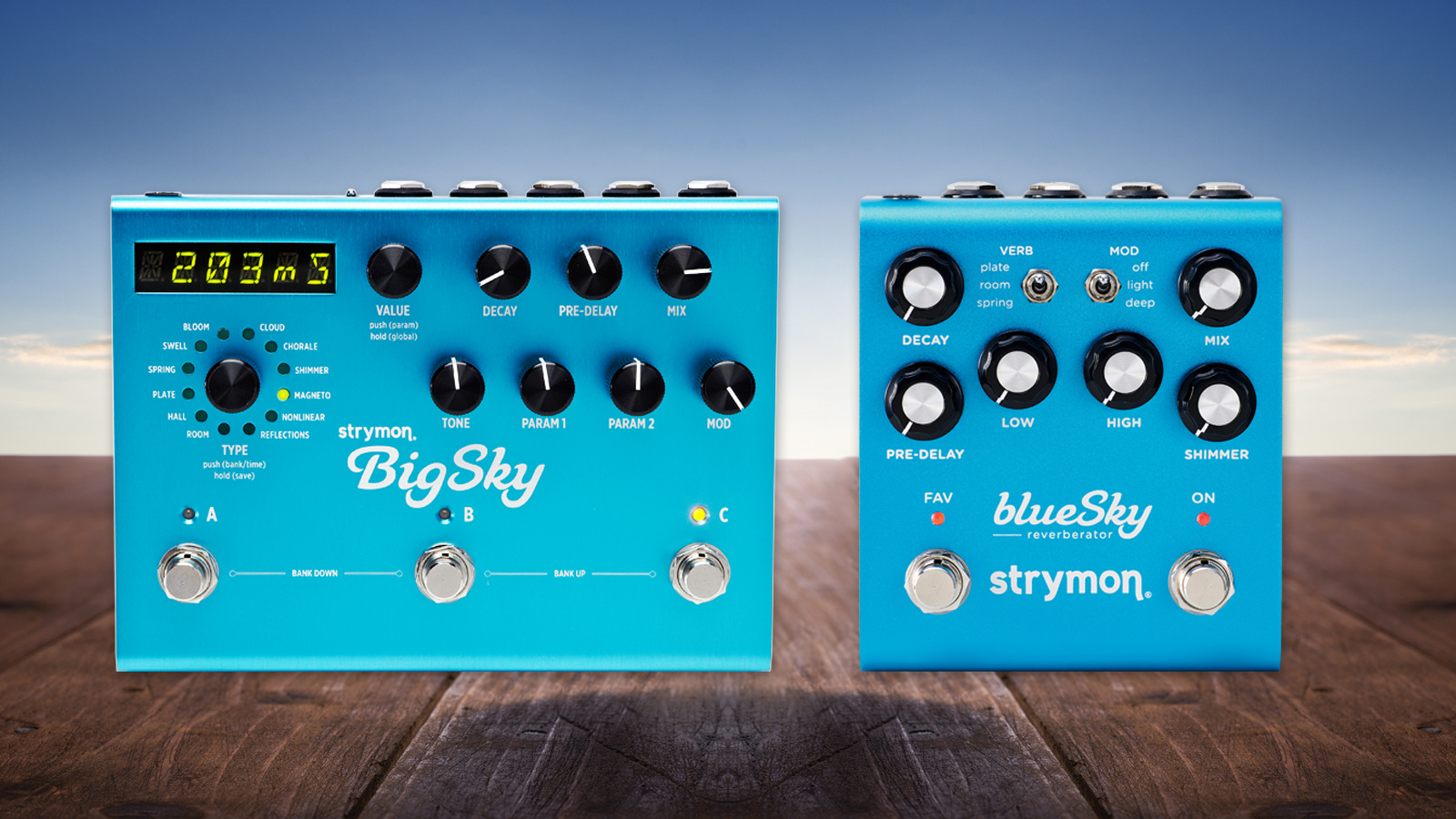
A good reverb pedal is a mainstay on pretty much every guitarist's pedalboard and its effect can be subtle or stratospheric. There’s no doubt Strymon make some of the best reverb pedals around, but out of their two heavy hitters the BigSky and BlueSky, which is the perfect choice for you? We’re going to take a deep dive into these two revered reverb pedals and look at the burning questions, so you can make the best decision for an addition to your rig.
Before we get started it’s important to note that Strymon recently released the BlueSky V2, which has a few differences to the original BlueSky. So, to save any confusion, we’re going to be using V2 as our benchmark for comparison.
Strymon BigSky vs Strymon BlueSky: At a glance
Strymon BigSky
- Reverbs: 12
- Presets: 300
- Knobs: 9
- Footswitches: 3
- Processor: 366MHz SIMD SHARC
- Audio quality: 24-bit 96kHz
- Power: 9V 300mA
Strymon BlueSky V2
- Reverbs: 3
- Presets: 1 (3w/ Switch, 300w/ MIDI)
- Knobs: 6
- Footswitches: 2
- Processor: 520MHz ARM Superscalar
- Audio quality: 24-bit 96kHz
- Power: 9V DC 300 mA
Strymon BigSky vs Strymon BlueSky: The history
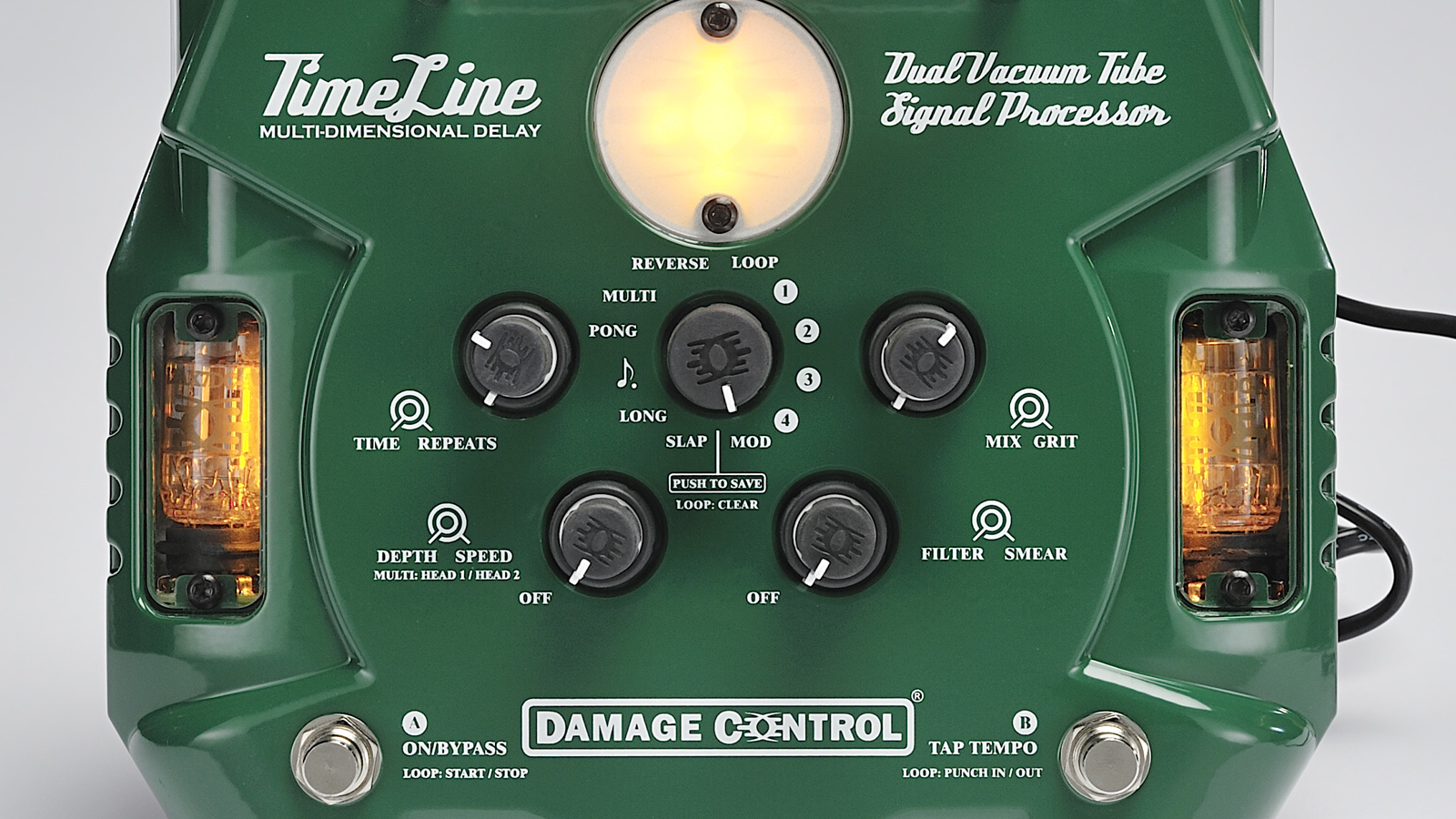
Strymon came about during the early 2000s when a group of former Line 6 engineers decided to come together to form a new company with the aim of tapping into the boutique effects pedal market. Their original company ‘Damage Control’ didn’t quite land as well as expected but they did discover the power of high-end DSP with the well-received Damage Control TimeLine.
Towards the end of the decade, they decided to rebrand as Strymon, releasing the BigSky, BlueSky, Deco, and the TimeLine as we know it today. As you might well know, these pedals proved to be smashed hits thanks to the advanced algorithms and DSP combined with the depth of parameter control.
Today Strymon is one of the biggest names in the effects pedal game and both their BigSky and BlueSky reverb pedals have become mainstays on pro guitar player's pedalboards the world over. It's not just guitarists getting in on the action either, many synth players and audio engineers/producers have utilized these two reverb pedals in their productions.
Strymon BigSky vs Strymon BlueSky: Features
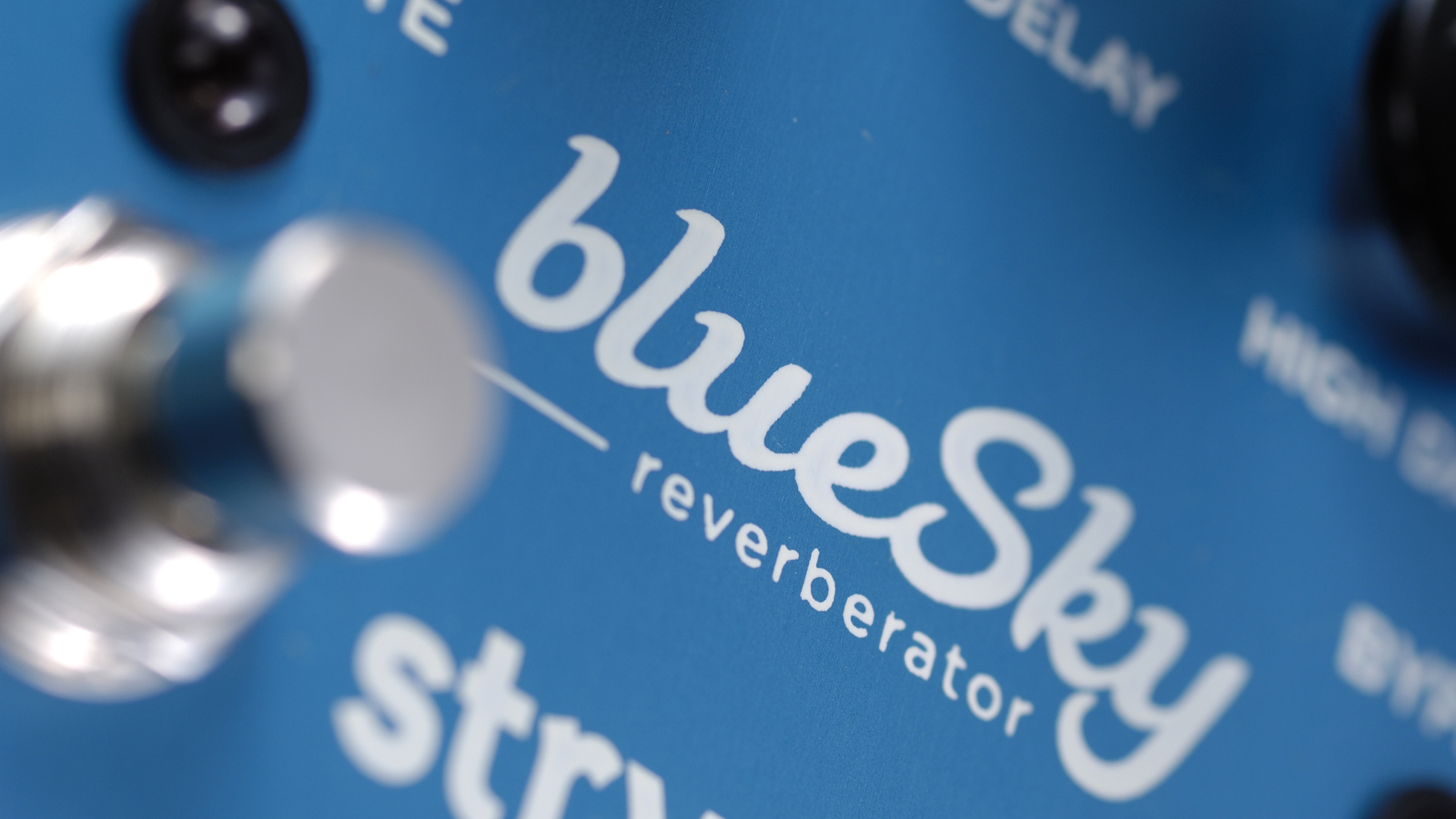
The Strymon BigSky is a staple on pro-guitarists' pedalboards, and this is because of its hugely deep feature set. It has twelve different reverb sounds, which compared to other pedals may not seem that much, but it’s the depth of parameters that you can shape which makes the BigSky such a popular choice. Having such control over the parameters of the reverb tone means you can dial in the perfect reverb for any style or situation.
You've got seven front panel mounted knobs that can all be utilized to scope the sound, plus there are other parameters within the pedal’s menu system. The BigSky also features two assignable knobs so you can quickly access your favorites and tweak them on demand.
All the latest guitar news, interviews, lessons, reviews, deals and more, direct to your inbox!
It’s this sonic depth that makes the BigSky so prevalent, despite having been released well over a decade ago. However, many guitarists will find this amount of choice still overwhelming, and if you’re not one to menu dive, then enter the BlueSky.
It’s this sonic depth that makes the BigSky so prevalent, despite having been released well over a decade ago
Strymon’s BlueSky takes the core values of the BigSky and shrinks everything down into an easier-to-manage package that won’t take up as much valuable pedalboard real estate. It features three reverb sounds and six knobs with which to tweak them. Improving on the V1 design, an extra knob was added to control the amount of shimmer, which as a consequence freed up a switch for mod control, giving you more command over your reverb sound.
There’s still plenty of scope to manipulate your reverb sounds despite the initially more limited feature set compared with the BigSky. Dedicated low and high EQ knobs allow you to dial out any harsh high-end or boomy low frequencies, as well as your typical reverb pedal fare in the mix and decay knobs. The lack of menus will certainly be pleasing to some, giving you all your options on the front panel of the pedal.
Winner: The BigSky is bigger and thus by default carries more features so if the amount of sounds is an important factor for you, then it’s the clear winner here. Of course, we’ll get to the usability debate later on in the article but in a pure numbers game, and the BigSky has the edge.
Strymon BigSky vs Strymon BlueSky: Connectivity
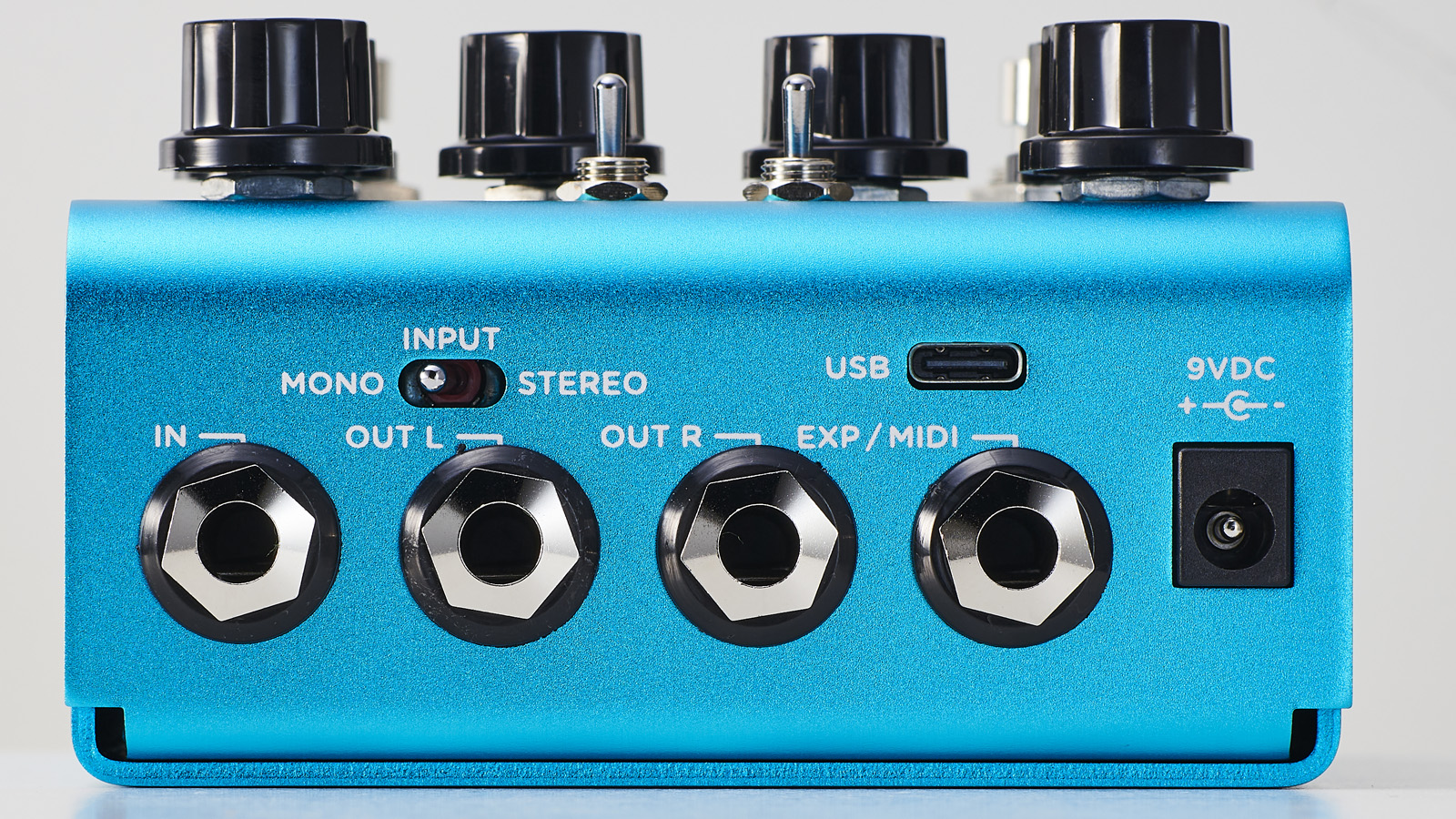
The BigSky’s connectivity is a big factor in why it's used by so many different guitarists. It’s got dedicated stereo in and outs, meaning it’ll work just as well in complex stereo guitar rigs as it will as a tool in the studio. It’s also got MIDI in and out that allows you to control any of the pedal's parameters from a MIDI foot controller.
The expression pedal input can also be used to either control any parameter with a treadle-style pedal, or you can plug a momentary tap switch to control pre-delay on all settings, or decay time on the Magneto and Nonlinear settings.
Despite its smaller size, the BlueSky has a remarkably similar connectivity layout, utilizing advances in technology to fit a lot of functionality into a smaller unit. The input is a single TRS type, so you’ll need a splitter if you’re running two cables into it, or it can be used mono to then split your signal going forwards.
Dedicated stereo-outs sit alongside an expression/MIDI port, which allows you to plug in an expression pedal that will control any of the unit's knobs. It also doubles as a MIDI connection when used with the Strymon MIDI-EXP cable. Finally, a USB-C allows you to update firmware and also doubles as a MIDI connector using the appropriate conversion cable.
Winner: Despite the size difference, there are pretty much no limitations in terms of connectivity from either pedal. If we had to call it we’d say the BigSky wins out as it doesn’t require special, additional cables to unlock the MIDI function, nor a splitter to get a stereo input.
Strymon BigSky vs Strymon BlueSky: Sounds
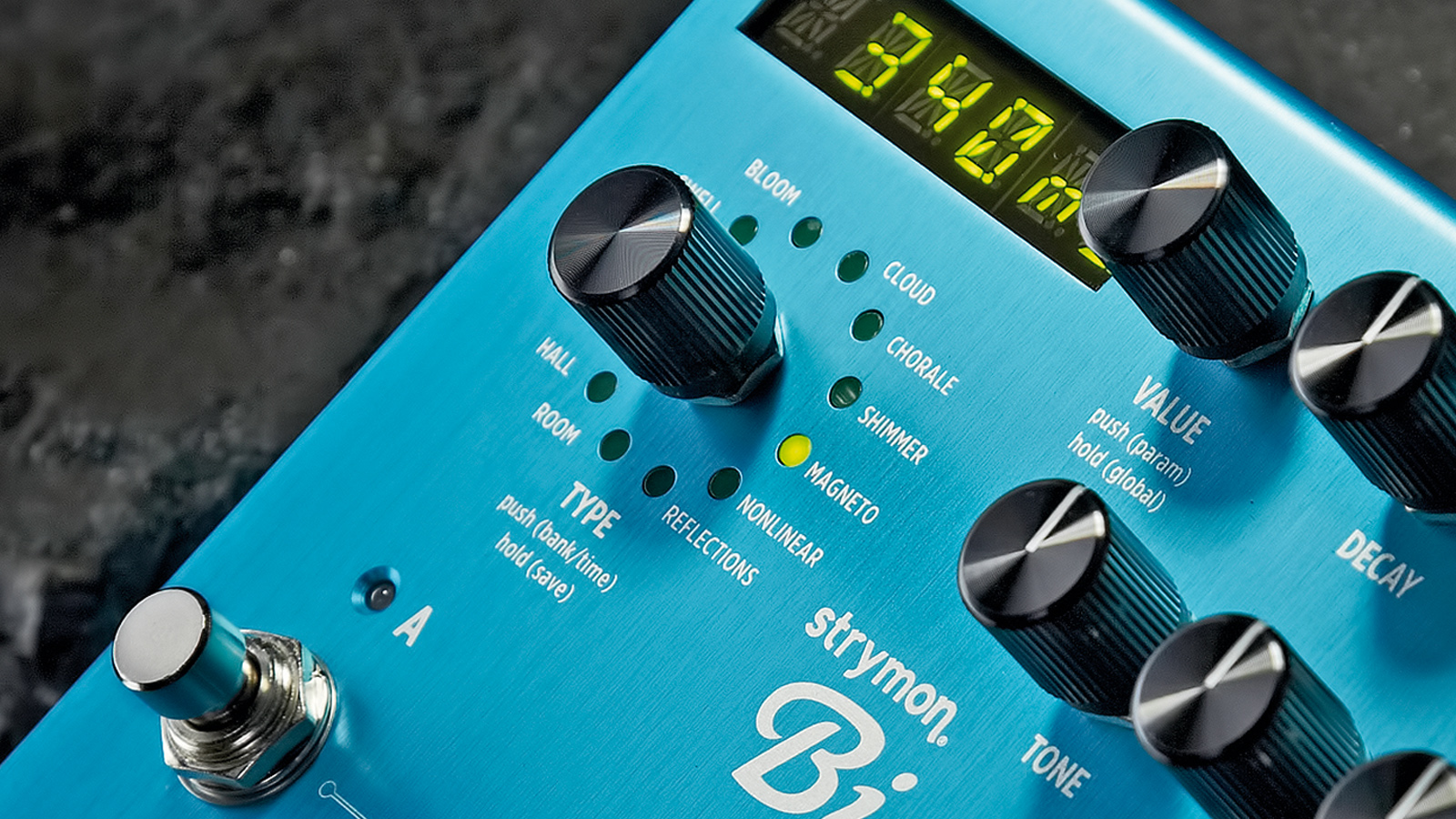
The BigSky features twelve different sounds or ‘machines’ as Strymon themselves call them. These range from your reverb pedal standards like plate, room, and spring right through to the pitch-shifting sounds of shimmer, multi-head echo, and the much-loved cloud algorithm. Our personal favorite is the 'cloud' sound, and it’s become so popular that it spawned its own pedal in the Strymon Cloudburst. The 'cloud' algortihm bathes your guitar tone in a wash of reverberation that reacts brilliantly, all-encompassing but never feeling overwhelming.
The shimmer reverb is sublime as well, with two tunable voices that allow you to dial in that high-pitched ethereal sound, or something darker and more foreboding. Nonlinear gives you some amazing washes of sound that catch you by surprise, it’s a backward reverb but with an amazing array of options to manipulate the reverb tail. The bloom and swell modes are also fantastic for the epic soundscape-inclined guitarist.
There are a vast array of sounds present with the Strymon BigSky, more than we could cover within the constraints of this article. For players who like things ambient or want to experiment with different sounds, there’s plenty here to keep you satiated, for those who are looking for more traditional reverb tones, the BigSky is probably overkill.
For players who like things ambient or want to experiment with different sounds, there’s plenty here to keep you satiated
The Strymon BlueSky on the other hand features a comparatively small three reverb sounds with plate, room, and spring modes. This is a somewhat of a simplification though. You’ve also got a dedicated shimmer knob, which lets you add those octave-infused reverb tails to any of the sounds, as well as a mod switch for some chorus-like warble.
For the more traditional players, the plate sound delivers on jangly chord work and crunchy power chords. The spring sound has all of that lovely metallic ‘sproing’ without getting too washy, without a doubt one of the best spring sounds we’ve heard. Of course, we love adding shimmer to pretty much everything we play, and the dedicated knob means you can transform something more traditional straight into spaced-out ambient territory.
If you’re looking for something that doesn’t require menu diving or sub-menus to get the best out of, or you’re just more likely to use more traditional reverb types, then we’d go for the BlueSky. You’re not super limited to traditional sounds should the mood take you, but you’re less likely to suffer from option paralysis.
Winner: With this one, we’re gonna have to call it a draw. In terms of the sound differences between the two we think you’ll be pretty hard pushed to find a difference. These are both incredibly rich and luscious-sounding pedals and easily stand as some of the best reverb pedals you can buy today. The sound quality of both pedals is frankly phenomenal and in terms of pure quality, there’s no calling it between the two.
Strymon BigSky vs Strymon BlueSky: Usability
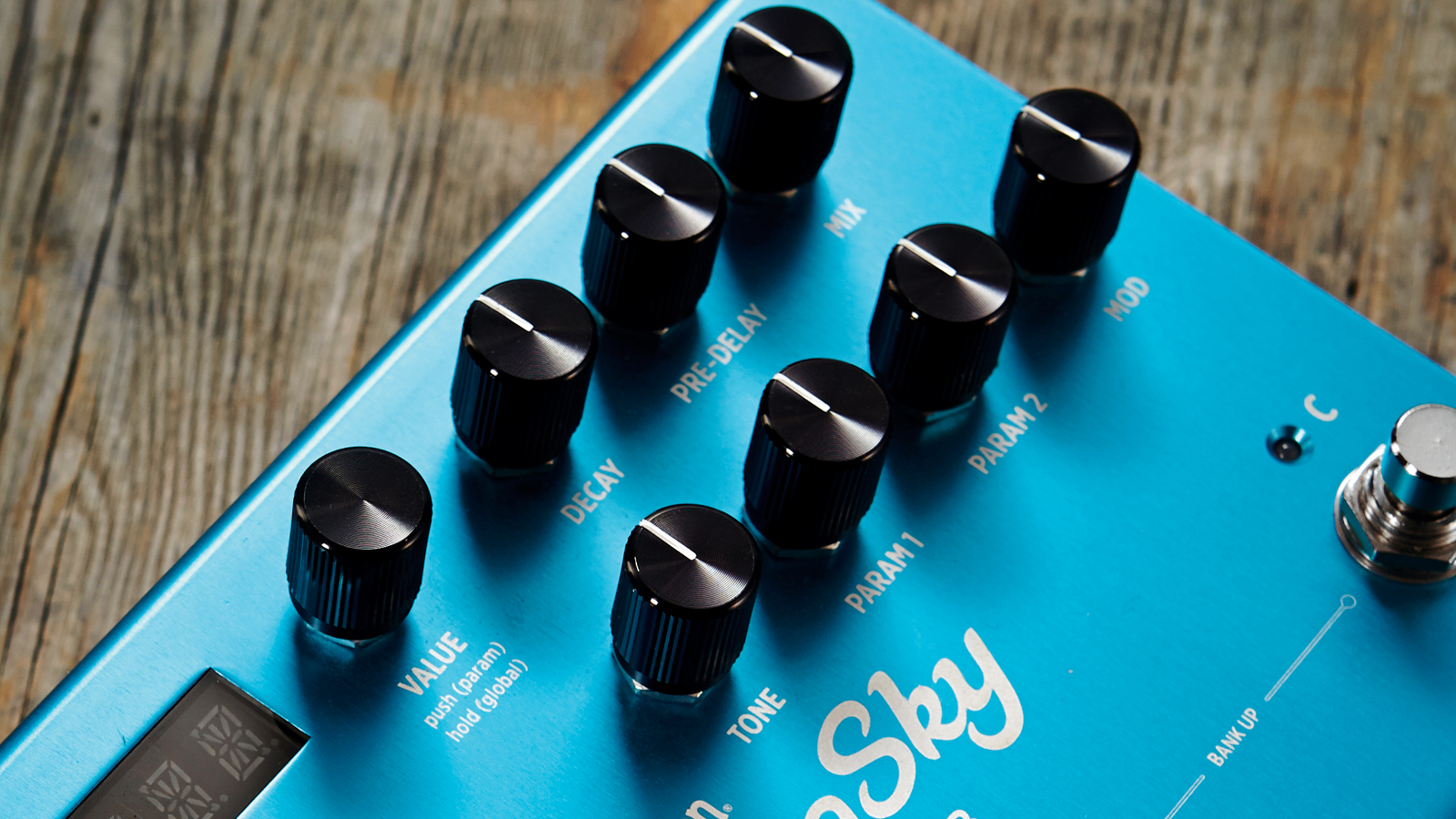
With using the Strymon BigSky there’s a definite learning curve, particularly if you’re coming from a traditional stompbox background. To get the most out of it you’ll need to read the manual and learn all of its ins and outs and let’s face it, when you’re spending this amount of money on a guitar pedal, you want to get all the functionality you can from it.
It’s entirely possible to use it with just a basic knowledge of pedals and some knob twisting of course, but that’s kind of like buying a supercar and never stretching its legs by pushing the limit on the highway.
By comparison, the BlueSky is far more like the regular stompbox most players will be used to. Plug it in, twist some knobs, and away you go. It’s easier to get to grips with and unless you’re delving into the extra MIDI connectivity options, you won’t need to look at the manual.
There’s something to be said for the immediacy of being able to tweak there and then, without having to waste time diving into a menu to change something operating in the background to your taste.
Winner: The BlueSky ermeges as the winner here thanks to its immediacy in tone tweaking. For those who are used to regular stompboxes, you’ll find your way around it in no time and unlike its bigger brother, you don’t need to start menu diving to get the most out of it.
Strymon BigSky vs Strymon BlueSky: Verdict
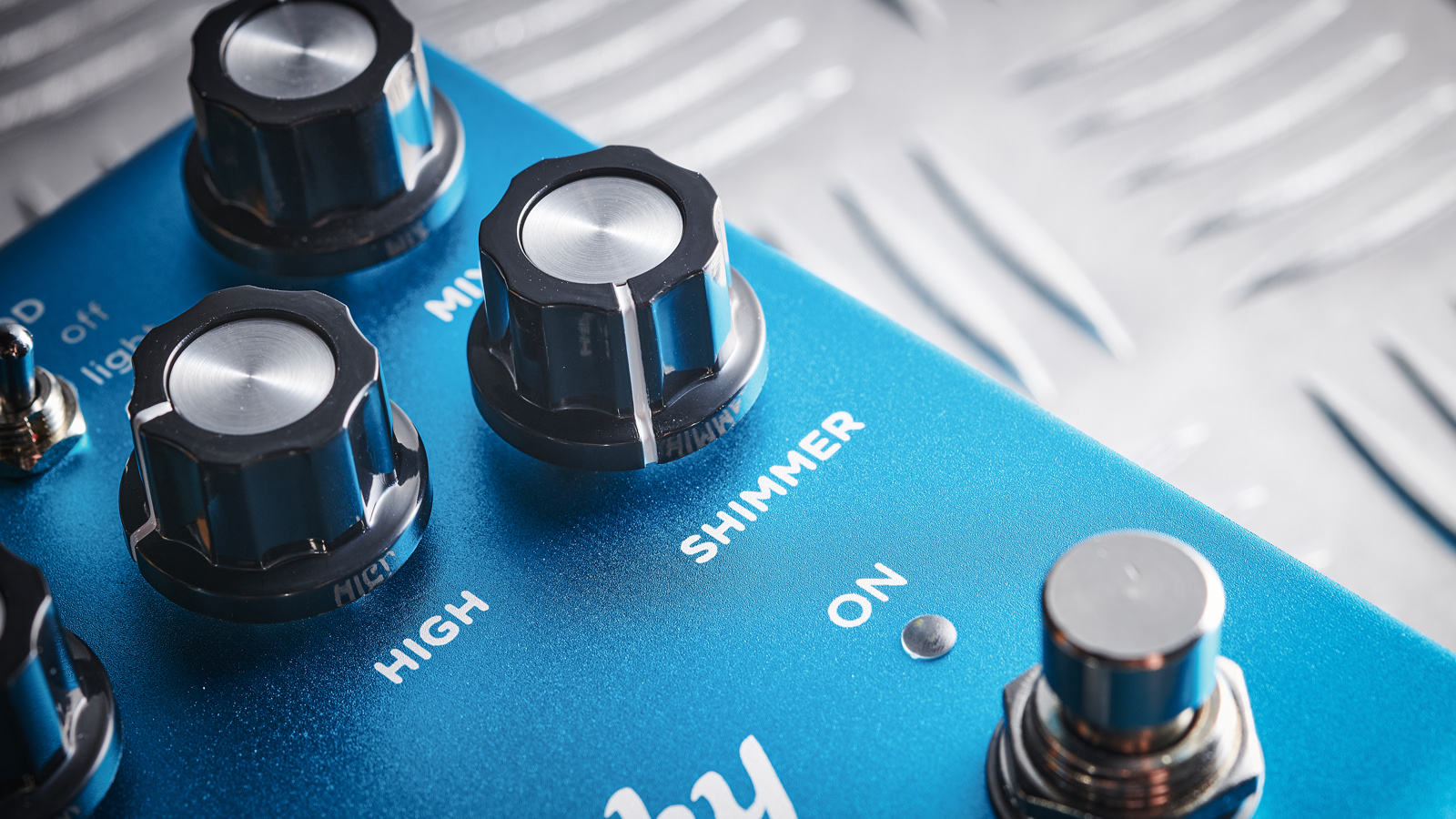
These are both incredible pedals and we’re sure the majority of guitar players would be very happy to have one or the other on their ‘boards. If you’re after something that can do lots of different sounds, as well as the more out-there ambient and eerie soundscape-type reverbs, then go for the BigSky. If you want something more immediate and quick to dial in, that won’t take up too much pedalboard real estate, then the BlueSky is the one for you.
That said, these pedals are very close in terms of price due to the age of the BigSky and the relative newness of the BlueSky V2. So it’s not a huge step up to spend a bit more cash and get yourself some more sounds and functionality. If you were to put a gun to our head, we’d have to opt for the BigSky, because just like those extra guitars we hardly ever play, sometimes it’s just nice to have options.
Need more pedals? Check out some of our buyer's guides
- Enhance your tone with the best delay pedals
- Add some oomph with the best octave pedals
- Get some grit with the best overdrive pedals
- The best Klon clones will save you some money
- Dirty up your tone with the best fuzz pedals
- The best looper pedals will enhance your creativity

Matt is a Junior Deals Writer here at Guitar World. He regularly tests and reviews music gear with a focus on guitars, amps, pedals, modelers, and pretty much anything else guitar-related. Matt worked in music retail for 5 years at Dawsons Music and Northwest Guitars and has written for various music sites including MusicRadar, Guitar Player, Guitar.com, Ultimate Guitar, and Thomann’s t.blog. A regularly gigging guitarist with over 20 years of experience playing live and writing and recording in bands, he's performed everything from jazz to djent, gigging all over the country in more dingy venues than you can shake a drop-tuned guitar at.
